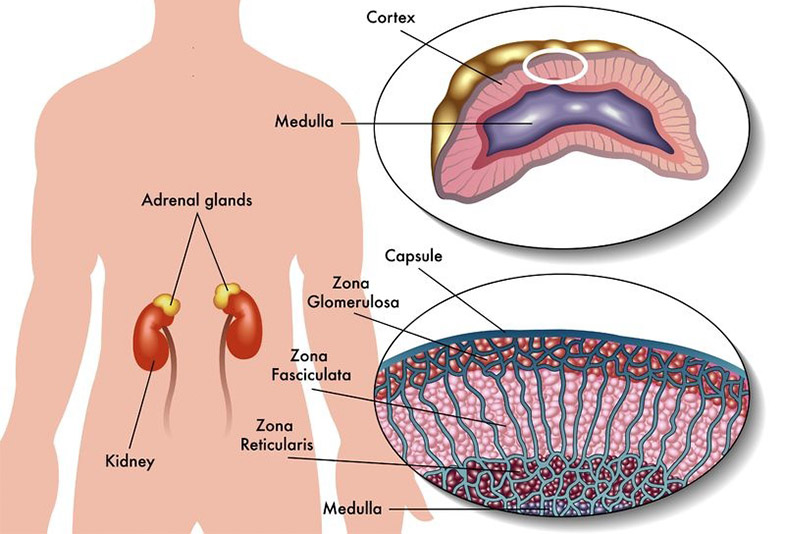

What are the signs and symptoms of a phaeochromocytoma? In some families, certain genes appear to be involved in developing tumours and there are a few genes that seem to be associated with the growth of a phaeochromocytoma. If the tumour develops in cells in the medulla of the adrenal gland, then it might secrete an excess of adrenaline or noradrenaline or both.

The cause of phaeochromocytomas is not known, the same as any other tumour. Phaeochromocytomas are related to a similar type of tumour found outside the adrenal gland called a paraganglioma. Phaeochromocytomas often produce an excess of these hormones. The adrenal medulla is responsible for the production of hormones including adrenaline (epinephrine) noradrenaline (norepinephrine) and to a lesser extent dopamine, which are needed for the ‘fight or flight response’ when the body becomes ready for stressful events or increased physical activity. At left in the medulla, large tumour cells are seen arranged in cords or small masses marked by chromogranin A (blue) at upper right the normal adrenal cortex is seen.Ī phaeochromocytoma is a tumour from the central part of the adrenal gland (sitting on top of each kidney) called the adrenal medulla. Light micrograph of a section through a phaeochromocytoma tumour of the adrenal gland.


 0 kommentar(er)
0 kommentar(er)
